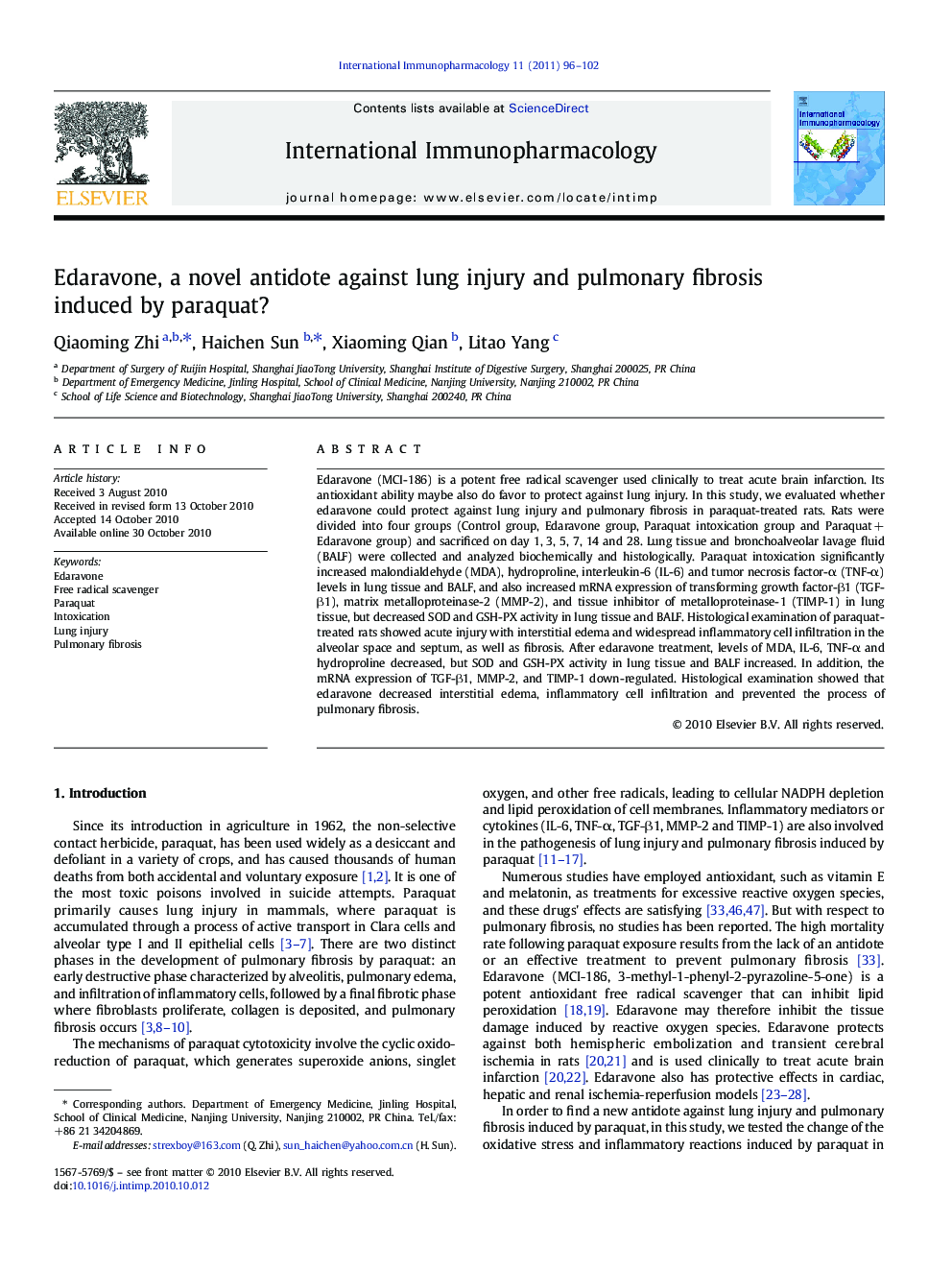| Article ID | Journal | Published Year | Pages | File Type |
|---|---|---|---|---|
| 2541180 | International Immunopharmacology | 2011 | 7 Pages |
Edaravone (MCI-186) is a potent free radical scavenger used clinically to treat acute brain infarction. Its antioxidant ability maybe also do favor to protect against lung injury. In this study, we evaluated whether edaravone could protect against lung injury and pulmonary fibrosis in paraquat-treated rats. Rats were divided into four groups (Control group, Edaravone group, Paraquat intoxication group and Paraquat + Edaravone group) and sacrificed on day 1, 3, 5, 7, 14 and 28. Lung tissue and bronchoalveolar lavage fluid (BALF) were collected and analyzed biochemically and histologically. Paraquat intoxication significantly increased malondialdehyde (MDA), hydroproline, interleukin-6 (IL-6) and tumor necrosis factor-α (TNF-α) levels in lung tissue and BALF, and also increased mRNA expression of transforming growth factor-β1 (TGF-β1), matrix metalloproteinase-2 (MMP-2), and tissue inhibitor of metalloproteinase-1 (TIMP-1) in lung tissue, but decreased SOD and GSH-PX activity in lung tissue and BALF. Histological examination of paraquat-treated rats showed acute injury with interstitial edema and widespread inflammatory cell infiltration in the alveolar space and septum, as well as fibrosis. After edaravone treatment, levels of MDA, IL-6, TNF-α and hydroproline decreased, but SOD and GSH-PX activity in lung tissue and BALF increased. In addition, the mRNA expression of TGF-β1, MMP-2, and TIMP-1 down-regulated. Histological examination showed that edaravone decreased interstitial edema, inflammatory cell infiltration and prevented the process of pulmonary fibrosis.
